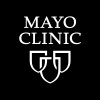
The Randomized OPTIMAL-ACT Trial
Coronary Artery DiseaseIschemic Heart Disease2 moreThe purpose of this study is to find the ideal range of the activated clotting time (ACT) during percutaneous coronary intervention (PCI) that is associated with lowering the rate of undesirable medical outcomes

Evaluation of Cognitive Status, Kinesiophobia, Physical Activity Level, and Functional Performance...
Heart DiseasesThe aim of our study is to evaluate cognitive status, kinesiophobia, physical activity level, and functional performance in coronary intensive care.

Evaluation of the Safety and Efficacy of the 2-lead OPTIMIZER® Smart System
Heart FailureCongestive Heart Failure2 moreThis is a multicenter, prospective, single-arm study of the Optimizer Smart System with 2-leads

Dextran-based Priming vs. Crystalloid and Mannitol-based Priming Solution in Adult Cardiac Surgery...
Heart DiseaseThis study will compare two priming solutions for extracorporeal circulation, one based on Dextran 40, one based on crystalloid and mannitol. Primary endpoint is oncotic pressure during cardiopulmonary bypass. Secondary endpoints included fluid balance and organ functions.

Fresh Frozen Plasma and Plasmalyte ® for Priming Cardiopulmonary Bypass in Infants and Children...
Congenital Heart DiseaseCoagulation abnormalities after pediatric open-heart surgery are complex and very often multifactorial. Besides the cardiopulmonary bypass (CPB), the congenital pathology and the coagulation tests during CPB, the younger age has been the most significant risk factor for bleeding and transfusion requirements. In children the volume of pump priming is much higher compared with the patient's circulating blood volume. For this reason the CPB tubing system is primed with packed red blood cells and fresh frozen plasma (FFP) to avoid excessive hemodilution and induced coagulopathy. While this is routinely performed in neonates and small infants, the routine priming of CPB system with FFP has been questioned in several randomized prospective studies in older infants. However, the results of these studies are conflicting. Moreover, they show methodological issues.

Technical Development for Pediatric Cardiovascular MRI
Congenital Heart DiseaseCardiovascular DiseaseThis study will explore new ways of using magnetic resonance imaging (MRI) to evaluate pediatric patients with cardiovascular disease,congenital heart disease in patients of all ages, fetuses undergoing clinically indicated MR imaging.

Scandinavian Multicenter Study to Advance Risk Stratification in Heart Disease- Ventricular Arrhythmias...
Ventricular ArrhythmiasImplantable Defibrillator User2 moreThe purpose of this study is to identify markers of increased risk for incident ventricular arrhythmias and cardiovascular events in patients already being treated with an implantable cardioverter-defibrillator (ICD) by exploring patient history and clinical findings, biological markers, ECG markers, and echocardiographic markers.

RESOLUTE China RCT
Ischemic Heart DiseaseStenotic Coronary Lesion3 moreThe primary objective of this study is to evaluate the in-stent late lumen loss (LLL) at 9 months, defined as the difference between the post-procedure minimal lumen diameter (MLD) and the follow-up angiography MLD, of the Resolute Zotarolimus-Eluting Coronary Stent System compared to Taxus Liberte Paclitaxel-Eluting Coronary Stent System in a real-world all-comer patient population requiring stent implantation.

Cardiopulmonary Rehabilitation for Adolescents and Adults With Congenital Heart Disease
Congenital Heart DiseaseHeart Defects1 moreThe hypothesis of this study is that participation in a formal cardiopulmonary rehabilitation program improves aerobic exercise capacity and quality of life over the medium term for patients with congenital heart disease with reduced exercise capacity. To test this hypothesis, subjects will be randomized to either receive a 12-week cardiopulmonary rehabilitation program or standard of care, with interval testing of aerobic capacity and other physiologic markers improved fitness, as well as assessment of quality of life.

Weight Loss as Treatment in Heart Disease
Heart Failure30 obese moderate-to-severe heart failure patients will be randomized to intervention or control in groups of 5-10 subjects. All will receive dietetic advice according to randomization and according to the European Heart Association. Intervention subjects will initiate with 8 weeks low energy diet, 800-1000 kcal/d by formula diet and subsequent four weeks reintroduction to regular foods supplying 1200 kcal/d substituting two daily meals with formula meal replacement. Control subjects are advised to follow the Nordic Nutrition Recommendations. Patients will be monitored by blood sampling and assessed by change in physical performance.
